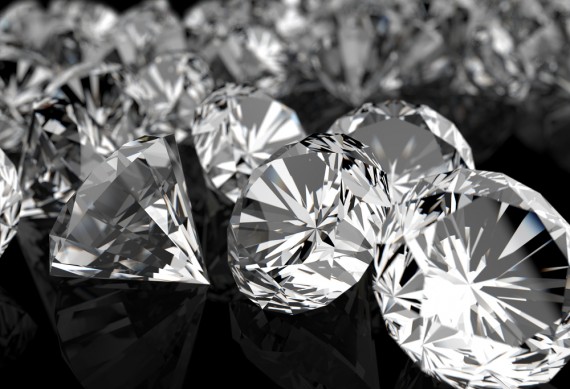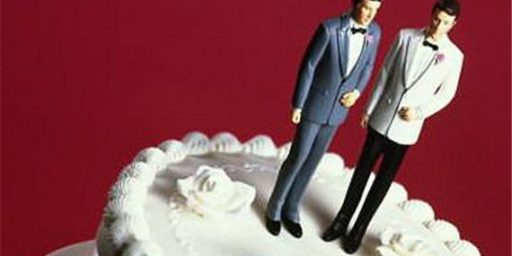Diamonds Are The World’s Biggest Scam?
Have we all been fooled by a 75 year old marketing campaign?
The entire tradition of giving diamonds as engagement rings turns out to be the most successful marketing campaign in history:
American males enter adulthood through a peculiar rite of passage – they spend most of their savings on a shiny piece of rock.
They could invest the money in assets that will compound over time and someday provide a nest egg.
Instead, they trade that money for a diamond ring, which isn’t much of an asset at all. As soon as you leave the jeweler with a diamond, it loses over 50% of its value.
Americans exchange diamond rings as part of the engagement process, because in 1938 De Beers decided that they would like us to. Prior to a stunningly successful marketing campaign 1938, Americans occasionally exchanged engagement rings, but wasn’t a pervasive occurrence.
Not only is the demand for diamonds a marketing invention, but diamonds aren’t actually that rare. Only by carefully restricting the supply has De Beers kept the price of a diamond high.
Countless American dudes will attest that the societal obligation to furnish a diamond engagement ring is both stressful and expensive. But here’s the thing – this obligation only exists because the company that stands to profit from it willed it into existence.
This is a story that’ been related before, so it really shouldn’t be unfamiliar. The idea that giving a diamond ring as part of proposing marriage has a long history is, in reality, mostly untrue. Yes, there are stories about wealthy people, and members of royal families giving such gifts as part of a betrothal, but it most certainly was not part of the practice of what would today be called the middle or lower classes until de Beers began its marketing campaign. Even when it was, though, the kind of diamond that were given were typically very small. My maternal grandmother got married in the late 1920s and the diamond in her ring is a 1/4 Carat at best, and admittedly I do not know for sure if she got that ring when my grandfather proposed to her, or at some later date in their marriage (I would imagine that it’s the second). Even the ring that my mother received would be considered paltry by contemporary standards. Nonetheless, I am certain that, in both cases, they appreciated them completely.
Today, though, there seems to be an ever increasing effort to make what the “proper” engagement ring ought to look like even more extravagant. There used to be a general rule that a guy should spend two months’ salary on an engagement ring. For all I know, it may still be the “general rule.” Where it came from, I cannot possibly fathom, because two months’ salary for someone in their mid-2os with just a high school education is far different, even in today’s economy, from someone in their late 20s with a college education. And yet, the diamond PR industry continues to increase the mythos that the measure of how much a man loves you is how big a diamond he gives you.
Now, some people will argue that diamonds are, at the very least, a good investment because they continue to increase in value. However, an increase in price is not necessarily the same thing as an increase in value and, as an article in The Atlantic in 1982 pointed out, there was then, and remains to this day, a bias in the industry against reselling diamonds that makes it less profitable than you might think:
Selling diamonds can also be an extraordinarily frustrating experience for private individuals. In 1978, for example, a wealthy woman in New York City decided to sell back a diamond ring she had bought from Tiffany two years earlier for $100,000 and use the proceeds toward a necklace of matched pearls that she fancied. She had read about the “diamond boom” in news magazines and hoped that she might make a profit on the diamond. Instead, the sales executive explained, with what she said seemed to be a touch of embarrassment, that Tiffany had “a strict policy against repurchasing diamonds.” He assured her, however, that the diamond was extremely valuable, and suggested another Fifth Avenue jewelry store. The woman went from one leading jeweler to another, attempting to sell her diamond. One store offered to swap it for another jewel, and two other jewelers offered to accept the diamond “on consignment” and pay her a percentage of what they sold it for, but none of the half-dozen jewelers she visited offered her cash for her $100,000 diamond. She finally gave up and kept the diamond.
Retail jewelers, especially the prestigious Fifth Avenue stores, prefer not to buy back diamonds from customers, because the offer they would make would most likely be considered ridiculously low. The “keystone,” or markup, on a diamond and its setting may range from 100 to 200 percent, depending on the policy of the store; if it bought diamonds back from customers, it would have to buy them back at wholesale prices. Most jewelers would prefer not to make a customer an offer that might be deemed insulting and also might undercut the widely held notion that diamonds go up in value. Moreover, since retailers generally receive their diamonds from wholesalers on consignment, and need not pay for them until they are sold, they would not readily risk their own cash to buy diamonds from customers. Rather than offer customers a fraction of what they paid for diamonds, retail jewelers almost invariably recommend to their clients firms that specialize in buying diamonds “retail.”
While the article speaks of potential challenges to the de Beers diamond monopoly that seemed to be developing 31 years ago, but which never played out, it is still a very good, albeit long, read if you’re interested in the economic and marketing of just how a simple piece of crystallized carbon that is far more common than the PR campaigns would lead you to believe suddenly turned into something that every many must buy the woman he loves, if he truly loves her.
Here’s how it happened:
We like diamonds because Gerold M. Lauck told us to. Until the mid 20th century, diamond engagement rings were a small and dying industry in America. Nor had the concept really taken hold in Europe. Moreover, with Europe on the verge of war, it didn’t seem like a promising place to invest.
Not surprisingly, the American market for diamond engagement rings began to shrink during the Great Depression. Sales volume declined and the buyers that remained purchased increasingly smaller stones. But the US market for engagement rings was still 75% of De Beers’ sales. If De Beers was going to grow, it had to reverse the trend.
And so, in 1938, De Beers turned to Madison Avenue for help. They hired Gerold Lauck and the N. W. Ayer advertising agency, who commissioned a study with some astute observations. Men were the key to the market:
Since “young men buy over 90% of all engagement rings” it would be crucial to inculcate in them the idea that diamonds were a gift of love: the larger and finer the diamond, the greater the expression of love. Similarly, young women had to be encouraged to view diamonds as an integral part of any romantic courtship.
However, there was a dilemma. Many smart and prosperous women didn’t want diamond engagement rings. They wanted to be different.
The millions of brides and brides-to-be are subjected to at least two important pressures that work against the diamond engagement ring. Among the more prosperous, there is the sophisticated urge to be different as a means of being smart…. the lower-income groups would like to show more for the money than they can find in the diamond they can afford…
Lauck needed to sell a product that people either did not want or could not afford. His solution would haunt men for generations. He advised that De Beers market diamonds as a status symbol:
“The substantial diamond gift can be made a more widely sought symbol of personal and family success — an expression of socio-economic achievement.”
…
“Promote the diamond as one material object which can reflect, in a very personal way, a man’s … success in life.”
The next time you look at a diamond, consider this. Nearly every American marriage begins with a diamond because a bunch of rich white men in the 1940s convinced everyone that its size determines your self worth. They created this convention – that unless a man purchases (an intrinsically useless) diamond, his life is a failure – while sitting in a room, racking their brains on how to sell diamonds that no one wanted.
This doesn’t mean that buying a diamond ring as an engagement ring is wrong, or that it’s right. As the Business Insider article notes, there is this entire concept of intrinsic value that essentially says that individuals assign value to items that aren’t necessarily related directly to their economic value. Indeed, one of the great insights of the Austrian School of Economics is the entire idea of the Subjective Theory of Value, which in its simplest terms means that different individuals place different values on different things and that those subjective values are what work together via the price mechanism to set prices. Whether because of marketing, sentiment, or tradition, there are many people who now place great value on the idea of giving and receiving a diamond ring as a promise of marriage. That may change at some point, but it’s unlikely that it’s going to happen any time soon.
So, no, I’m not judging the idea of diamond engagement rings, but I suppose it’s worth recognizing that the origins of this practice are far less romantic than the television commercials would have us believe.







Why yes it is. And why are you only learning about this now? The story has been out there for easily 40 years.
Yeah, I made this exact argument to my wife when she was still my girlfriend, and didn’t succeed in convincing her of the lack of a necessity for a diamond ring for us to get engaged. I ended up coming up with a brilliant plan to not spend every drop of savings I had (which wasn’t much at the time). She had her recently-departed paternal grandmother’s ring in her possession, and she missed her dearly. I got ahold of it with her father’s help and was going to have the center stone (which was a decent size even for today, it must have been gigantic for back then) from that ring remounted in a new setting.
Of course, when I found out what kind of settings she liked, I was once again disheartened since the settings themselves were about as much as I was trying to avoid spending on a diamond in the first place. I ended up selling my motorcycle to pay for the setting. 🙁
She loves the ring, though,
Unquestionably one of the biggest scam of all time. I will never understand how half of humanity was brainwashed into putting such a value on shiny rocks.
Yes. Diamonds are not rare.
Try to convince your girlfriend or fiancee that diamonds are a bad investment.
I’m glad my wife’s family has a tradition of colored stone engagement rings – a green sapphire is a lot cheaper than a similarly-sized diamond. And yes, this is why.
Indeed, when i was an undergrad in the early 90s, my roomie was an Industrial Technology major. In one particular lecture, the prof declared that DeBeers straight-up sends somthing over 90% of the production tof their mines directly into storage, never to be seen on the markets. And they control a big enough percentage of the entire plant’s diamond mines (especially those capable of producing larger-carat stones) that this alone keeps the price high. If they ever need cash for any purpose *cough*bribery*cough* they just dribble some out onto the market.
Frankly, I wouldn’t be the least bit surprised if you & James got a polite phone call urging you to pull articles (and comments) like this down…
Another interesting tidbit from that lecture was about how some people (the US intelligence community not among them) were not the least bit surprised when the USSR collapsed. Do you remember the old 80s-era ad campaigns for diamonds? The ones that inexplicably ended with the line “Buy your loved one a diamond of a carat or more”? The reason behind that line was that the USSR was already going broke & dumping their strategic reserves in various areas, including diamonds. And most Soviet-controlled mines were only capable of producing smaller, sub-carat diamonds. Hence, the sudden fascination with single, glitzy, big-ass stones, rather than a dusting of smaller stones.
My wife did not want or need a diamond ring. In fact for many years she rejected the very notion of diamonds as ridiculous.
Then I decided to buy her a diamond ring and earrings anyway.
Pro tip: don’t do that.
Turns out that on more careful reflection, she likes diamonds just fine. Likes them quite a bit, actually.
Yeah. That was dumb.
When my husband and I got married almost 28 years ago, we couldn’t afford an engagement ring. Well, at least one that wouldn’t have required a magnifying glass to see. Instead, he gave me a very pretty wewdding ring and the promise to someday give me a beautiful diamond ring. It took almost 16 years, and he surprised me one Christmas. Yes, it’s beautiful, yes, I appreciated it and yes, it’s huge, but it spends more time in our safety deposit box than it does on my finger. I prefer the wedding band he gave me the day we got married.
I tried to talk my daughter and her boyfriend out of wasting the money on an engagement ring, because that money could be better spent on other things. I was as successful as I was in talking them into swapping a big, fancy wedding for a substantial down payment on a house instead. I guess they’d rather have the ring and the party. They are getting engaged next month and I get to start planning a wedding that will happen in a city other than the one I live in. Oh joy.
@DC Loser: Didn’t have a problem with that, actually.
“A diamond is an investment in love”…yeah because it ain’t an investment in value.
“A diamond is forever”…yeah, because nobody will buy it back for what you paid for it.
If you must buy a stone, get a ruby or emerald. Those are actually worth what you pay for them.
@Stonetools: I
It´s only the half of humanity that lives North of Rio Grande and South of the Great Lakes in North America. Even among the super rich here in Brazil it´s rare to find people with diamond engagement rings, and the super rich in :Brazil are obsessed with ostentation.
@anjin-san:
Not only that. Synthetic Diamonds are harder than “natural” diamonds, and they can be purer. In some sense, you can produce SUPERIOR diamonds in laboratory than the varieties that are mined during Civil Wars in Africa.
What the hell? Two months? I’m not spending $170,000 on one ring! That’s insane!!
@Electroman:
Rubies and sapphires are actually significantly more rare than diamonds, which are actually one of the most common gemstones, and only have inflated values because the diamond cartels limit the supply to keep prices up.
@ Andre Kenji
My mother gave me an old family diamond with excellent clarity for my wife’s engagement ring. The first two jewelers I took it to though it was synthetic. Finally took it to a high end jeweler in SF who took one look & said “nice – has it been in your family a long time”? Apparently a lot of what is being sold now is crap.
Yes it’s a scam.
@Stormy Dragon: aye and the whole hype machine they’ve got in place.
Sapphire engagement ring here..
Biggest scam? They’re a scam but nowhere near the biggest. Off the top of my head I could probably name a dozen bigger scams, starting with the Department of Defense.
I like the way they promote yellow diamonds in Australia and clear ones in the US… Split the market to sell a continuum of colors at a premium. Genius!
@Stormy Dragon:
A buddy of mine had a sapphire mine in Montana for years (he is a silversmith and made our rings) and said the best sapphires are “Yogo” sapphires. He also said they are no longer (as of 5 years ago) being mined. He only had one left so that went into the engagement ring and our wedding rings were made with lesser sapphires.
The difference was that “lesser” sapphires had to be “cooked” (heat treated IIRC) to get the color that Yogos come out of the ground with. Thru a jewelers loupe, even I could tell the difference.
Interestingly enough, was directed to this video: When words aren’t enough…
One more thing: This whole thread is just more proof that an OzarkHillbilly is smarter than your average Cidiot…. Either that or he is just one cheap son of a beach.
@OzarkHillbilly: Read to the bottom of that page and it turns out that soon after the wife and I got married a guy by the name of Mike Roberts bought the Vortex mine and eventually reopened it. Sadly tho, he was killed in a mining accident last year. The family is working to reopen it as of this time.
I remember an old ‘Herman’ cartoon.
caption: “Yea, $17.00 is a lot of money… but diamonds are forever.”
@OzarkHillbilly:
The distinction is due to the fact that when crystals form slowly, they tend to push impurities out of their matrix as they grow. Since diamonds are solid carbon, they can still form when they grow slowly, which leads to large crystals with few defects.
Rubies, emeralds, and sapphires, on the other hand, depend on the presence of specific impurities (e.g. a ruby is aluminum oxide with chromium impurities, without the chromium, you just get corundum crystals). They can only form if they cool fast enough that the impurities don’t get pushed out of the matrix, but not so fast that they have physical defects in their structure. This makes them far less likely to occur naturally than diamonds.
Diamonds are a Girl’s Best Friend
Marilyn at the peak of her powers.
I called my now fiance’s mother, and asked to use her ring. Got major in-law brownie points for that move, and saved a few hundred dollars. Then I took my fiancé to an art fair, visited the jewlers’ booths and asked her what her favorite stones were.
One free gold band and a solitary sapphire, later, I’m only out $200 and some time.
Ahh, love.
Don’t look at me. I broke off an engagement when the fellow bought a ring without telling me he was planning on it and brought home a diamond. Anyone who knew the first thing about me would know a) to take me along when buying the ring (it’ll be cheaper that way, I promise) and b) I love emeralds and don’t care about diamonds.
@Argon:
There is at least one retail store chain in the US promoting “Chocolate Diamonds” now – must be some sort of brown-colored rejects…. It’s all in the marketing!
@Stonetools:
Simply stated: hormones.